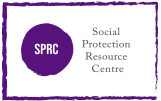World Day to Combat Desertification and Drought, 17th June, 2022

Worldwide, the arid regions have been experiencing cyclical droughts and devastation due to land desertification. Desertification is land degradation in arid, semi-arid, and dry sub-humid areas, collectively known as drylands, resulting from many factors, including human activities and climatic variations (United Nations Convention to Combat Desertification (UNCCD) 1994). The range and intensity of desertification have increased in some dryland areas over the past several decades. The major human drivers of desertification interacting with climate change are expansion of croplands, unsustainable land management practices and increased pressure on land from population growth. Dryland populations are highly vulnerable to desertification and climate change because their livelihoods are predominantly dependent on agriculture, one of the sectors most sensitive to climate change and poverty exacerbates vulnerability of dryland populations.
Desertification is a global issue, with serious implications worldwide for biodiversity, eco-safety, poverty eradication, socio-economic stability, and sustainable development. Drylands are already fragile. As they become degraded, the impact on people, livestock and environment can be devastating. According to an estimate some 50 million people may be displaced within the next 10 years because of desertification. Droughts and desertification are broadly an environmental crises and it effects all domains of life. Droughts are also among the greatest threats to sustainable development, especially in developing countries, but increasingly so in developed nations too. In fact, forecasts estimate that by 2050 droughts may affect over three-quarters of the world’s population. The number and duration of droughts has increased by 29% since 2000, as compared to the two previous decades. An estimate of UNICEF indicates that by 2040, one in every four children will face severe water shortage.
Desertification, along with climate change and the loss of biodiversity, were identified as the greatest challenges to sustainable development during the 1992 Rio Earth Summit. Two years later, in 1994, the General Assembly established the United Nations Convention to Combat Desertification (UNCCD), the sole legally binding international agreement linking environment and development to sustainable land management and declared 17 June “World Day to Combat Desertification and Drought”. In 2007, the UN General Assembly declared 2010-2020 the United Nations Decade for Deserts and the fight against Desertification to mobilize global action to fight land degradation, led by the UNCCD. This year, the theme of the International Day Against Desertification, and Drought is “Rising up from drought together”, emphasizes the need of an early action to avoid disastrous consequences for humanity and the planetary ecosystems.
The World Day to Combat Desertification and Drought is observed every year to promote public awareness of international efforts to combat desertification. The day is a unique moment to remind everyone that land degradation neutrality is achievable through problem-solving, strong community involvement and co-operation at all levels. The matter requires even more attention now. When the land degrades and stops being productive, natural spaces deteriorate and transform. Thus, greenhouse gas emissions increase and biodiversity decreases. It also means there are fewer wild spaces to buffer zoonoses, such as COVID-19, and protect us from extreme weather events, such as droughts, floods, and sand and dust storms. It is the time that everyone must play a role to protect the land as future is in our hands and we can make a positive contribution together.
Actions Needed:
- Reforestation and tree regeneration.
- Water management — saving, reuse of treated water, rainwater harvesting, desalination, or direct use of seawater for salt-loving plants.
- Enrichment and hyper-fertilizing of soil through planting.
- Farmer Managed Natural Regeneration (FMNR), enabling native sprouting tree growth through selective pruning of shrub shoots. The residue from pruned tress can be used to provide mulching for fields thus increasing soil water retention and reducing evaporation.

